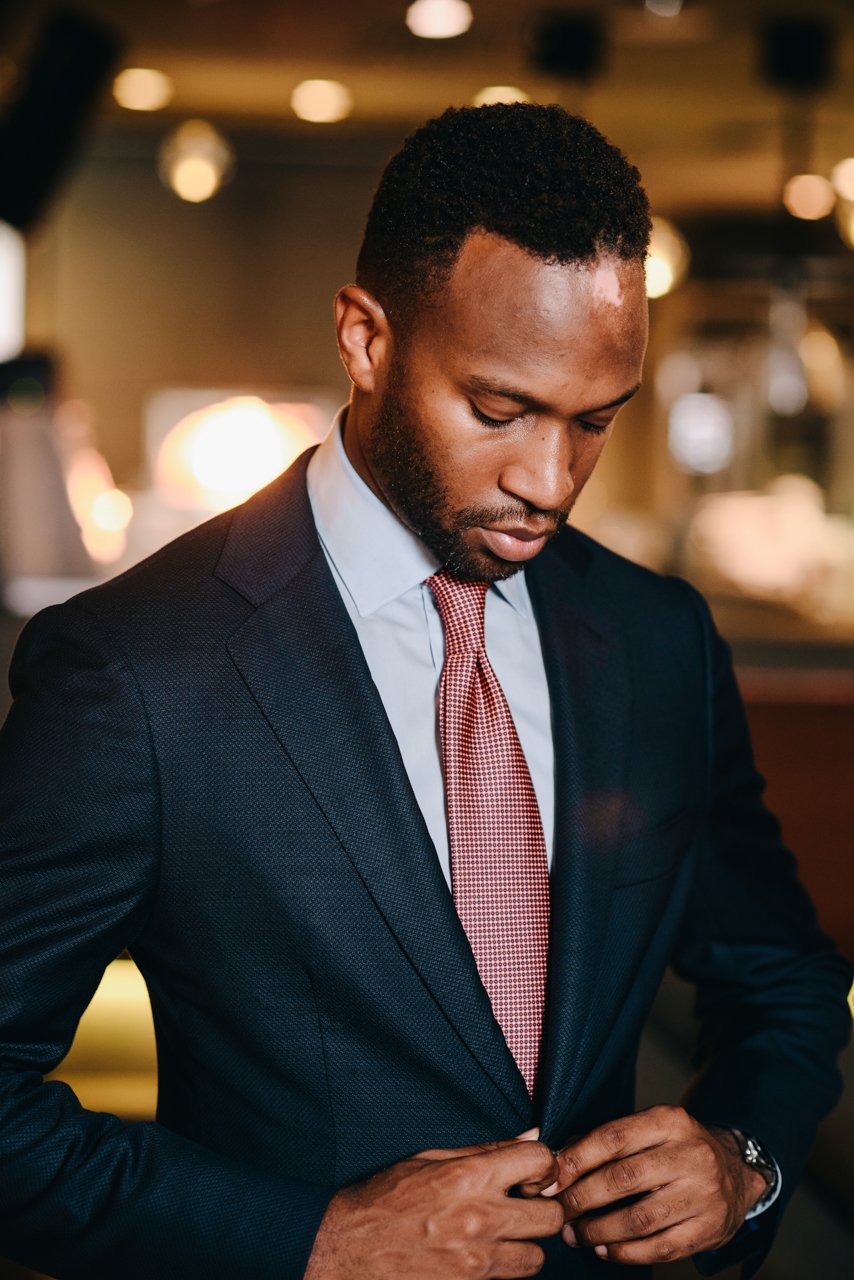5 Minutes with Kenneth Scarrat, CEO of Danat Bahrain
British born gemologist and pearl expert Kenneth Scarratt was raised all around the world. As a young boy, he spent time in India, Singapore and Turkey, and saw and experienced things that most children his age can only dream of. Throughout this time, he developed a fascination with gemstones (pearls became his obsession when he was in his 20’s), and his excitement evolved into a science— from appreciating the beauty in the stones, to asking many questions.
After leaving college and feeling dissatisfied with life, Scarratt returned to the army together with a friend. He signed up for the Grenadier Guards and was assigned the task of guarding the Crown Jewels, a duty that quickly became increasingly interesting to him. As soon as he left the army, he immersed himself in the education of gem materials, returned to college, completed his FGA and diamond exam, and found joy and gratification in his path.
While flipping through The Retail Jeweler magazine in 1972, he chanced upon an ad seeking a young gemologist at the London Chamber of Commerce and immediately composed a letter expressing his interest. At his interview, he met with five elderly gentlemen in three-piece suits and thick stiff white collars, hardly expecting to get the job. However, after seeing his military record, they asked him when he was ready to start. Although the salary was 20% less than what he was earning at the time, Scarratt has never looked back. He is currently CEO of DANAT, the Royally sponsored authority on precious gems and natural pearls in Bahrain.
Bahraini pearls are regarded as the best in the world. The water from the seas off Bahrain has been producing pearls for 3-5000 years continuously (a rarity in most regions). The mollusks in these waters are unique and small— a 10 mm pearl is a relatively big pearl from this type of mollusk. Interestingly, the name Bahrain means ‘two seas’ in Arabic, which is an accurate representation of both the freshwater and saltwater in the area. Years back, the freshwater would fall in the mountains of Saudi, travel through the strata which are sloped towards Bahrain, and then come up on the island, filling the entire island with freshwater springs— a Garden of Eden in every sense of the word. Because the waters were a mixture of freshwater and saltwater, the fishermen or pearl divers who were out on their boats for months on end, almost never needed to return to shore— they’d simply move their boat to access the freshwater.
Among pearls, there is a complete cross section of qualities and lusters: some are seed-like and messy, and others are incredibly beautiful and round. The luster on the pearls of the Bahraini mollusk is much higher compared to that of the Pinctada Maxima (pearls from Australia, Philippines, Indonesia and Burma)— although the Pinctada Maxima pearls are larger, because the mollusk is much bigger. The colors of the pearls are determined by several factors (among them the level of pollution in the water), and there is a wider range of colors in smaller pearls, including blues, oranges and reds.
In the early 1900s cultured pearls were becoming more accessible, and the first real testing laboratories began functioning 1925 and 1926 in London and Paris. This was a challenging time and there were difficulties differentiating the natural pearls from the cultured. In 1935 the very first oil well was found in Bahrain, opening more lucrative employment options and threatening the pearl industry. Today the trade of cultured pearls is prohibited in Bahrain.
The chances of finding a pearl is a number that Scarratt has never been tempted to provide. Some say 1 shell in 10,000, 1 shell in 1,000, etc. Suffice it to say, it’s extremely rare, he says— hundreds of shells can be opened without finding anything. In the days when Scarratt would go pearl fishing with Bill Abernethym (the very last pearl fisher in Scotland), he remembers that it was a fairly dangerous operation to get all the shell out, tip out the shell on the grassy banks, and then throw them all back. After years of experience since his childhood, Abernethy could simply look at the outside of the shell to know if there was a pearl in it (he was 65 or 70 at the time).
Today, the divers are young and inexperienced, and they need to open each one until they find something, but they choose to do it because it’s adventurous and fun and a great opportunity for those who enjoy diving. Scarratt cannot say if it’s profitable from their perspective— he has met and spoken with a few divers who say that they have difficulty making the money they need for the pearls they find. Bahraini divers either work in groups or dive alone. If a foreigner wants to dive, he needs a license and training, particularly if it’s in the deep water, which requires additional certification (a snorkel can be used in shallow waters).
Bahraini pearls are used for watches and jewelry, and some jewelers are becoming quite adventurous. Scarratt has his eye on a walking stick from Mattar Jewelers (who feature a range of sticks) and sometimes he wishes he needed one because they are so beautiful. Since the Bahraini pearls are not big, there is a wide range of products that can be ornamented with them.
Scarratt’s opinion on synthetic diamonds has always been very technical: he wants to be able to distinguish the difference. On a personal level, he sees that there is a huge potential danger to the diamond industry in general, in the same way that cultured pearls took over the natural pearl industry. He also feels uneasy with the tactics presented by the producers of synthetic diamonds who say that they are more compliant and more environmentally friendly, and further frustrated by those who claim that the FTC have declared that ‘man-made diamonds are diamonds’— which is a complete misrepresentation of their actual statement (which is that they must be declared as man-made diamonds).
While Scarratt acknowledges that there’s a market for synthetic diamonds, he insists that it needs to be clear and transparent in the same way that it should be for pearls. Shoppers who want to buy natural pearls, don’t want to be sold pearls as ‘natural’ if they are cultured. The same is true for a ruby and a diamond. De Beers have created their own company to sell the synthetic diamond known as Lightbox, but they are clearly stating what it is. A good friend of Scarratt’s recently told him about a company who offers the option to use the ashes of your granddad, beloved uncle, or other close relative, and transform it into a diamond that you can wear on your finger. Even if there was enough carbon in those ashes to do that, he says, how can anyone really know if the synthetic diamond is in fact what they claim it to be? Transparency and honesty in the industry are of utmost importance to Scarratt.
To those who assert that their product is better because it isn’t mined out of the ground, Scarratt is disappointed that they are not considering the families and individuals who work in the mines— they are quite literally taking the bread and butter out of their mouths, he says. “It’s not just about ecological concerns, it’s also about social concerns”. There may be 100 presses that product synthetic diamonds managed by 5 people, compared to a mine where 3000 employees and their families are involved. His concerns are not about whether it’s natural or synthetic— which can be tested and proven— but the half-truths and the misconceptions. “If everyone was transparent and did not try to embellish or attack other sides of the story, you could still have a product and sell it for what it is”.
Most will agree that it’s extremely difficult to determine if a pearl is natural or cultured, similar to the confusion when shopping for a diamond or ruby. Natural pearls do have a grading system based on understanding the product regarding shapes, colors, lusters, etc. but this is not yet utilized in the public arena. For those who are in the market for a diamond, ruby, pearl or any gem which will cost more than 1-3 months’ salary, it’s important to insist on a reputable and independent third-party verification. And yet, Scarratt is quick to highlight that there are jewelry companies with which buyers can be confident in their purchase, because the brand is so strong. A reputable company wouldn’t want to destroy their brand by not being honest (barring unintentional mistakes of course).
Scarratt once met a woman who was in her late 60s or 70s who showed him a stone she received as a gift from her late husband, which she thought was an Alexandrite (an extremely valuable color change stone). Scarratt knew it was synthetic and didn’t cost very much, but her husband had bought it for her in Alexandria, Egypt and she was immensely proud of it. Scarratt asked himself— should I be a cruel Brit who says, “You idiot, that’s a fake?”. Instead, he smiled and told her to enjoy it. “You have to be diplomatic sometimes. And that lady went on in life and appreciated it.”















